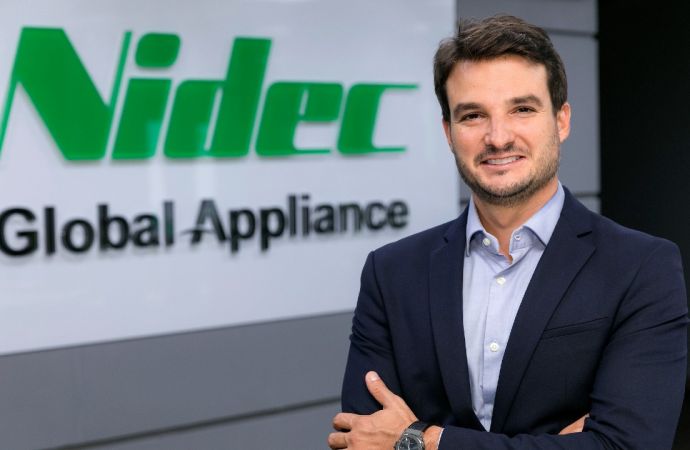Proposed standard falls one vote short of approval, preventing charge limit for A3 refrigerants from rising to 500 g from 150 g in commercial refrigeration.
_1555320196.png)
In a vote concluded last Friday (April 12), the International Electrotechnical Commission (IEC) rejected a proposal to increase the charge limit for flammable refrigerants to 500 g from 150 g in self-contained commercial refrigeration cabinets.
The vote ended a five-year process that many expected would result in a higher charge limit for flammable refrigerants like propane under the IEC’s 60335-2-89 standard. The effort to raise the limit could be revisited, though its fate is unclear at present.
The IEC vote – known as the Final Draft International Standard (FDIS) phase – fell just one vote short of being approved. Out of 35 total votes cast by National Committees, nine (25.7%) voted against; for the proposal to be enacted, the opposing votes could not exceed 25%. The full results of the voting, including votes cast by each country, can be found here.
The vote was received as a major setback to many who saw raising the charge limit as a way to boost the market for hydrocarbon refrigerants. “We are very disappointed by the news, especially to lose by such a small margin,” said Danielle Wright, executive director of the North American Sustainable Refrigeration Council (NASRC), which had strongly supported the 500-g charge limit. “But the upside to losing by one vote is that it’s an indication that it is a matter of ‘when’ and not ‘if’ the higher charge limit will be passed in the future.”
“The main outcome of a negative vote will be in itself another barrier for the deployment of climate-friendly alternatives to refrigerant gases,” said ECOS (European Environmental Citizens' Organisation for Standardization) in a position paper co-signed by several NGOs, including NASRC, and companies (including shecco, publisher of this website) on March 4, 2019.
The vote included participating (P) members (countries) on the IEC’s subcommittee (SC) 61C, which was responsible for the development of the proposed charge limit, as well as observer (O) members. (In a separate vote by only P-Members, the proposal passed by a 70.8% vote, surpassing the two-thirds minimum required.)
Participating members are obliged to vote at all stages and to contribute to standard development, while observer members follow the work, receive committee documents and have the right to submit comments. They also attend meetings and can vote.
Seven participating countries (Israel, Japan, Republic of Korea, Malaysia, Netherlands, Turkey and the U.S.) voted against the charge increase as well as two observer countries (Serbia and Hungary). Ten countries abstained and six observer countries did not participate in the vote.
“I was hoping it would succeed,” said Marek Zgliczynski, chair of SC 61C, and director of research and development for compressor manufacturer Embraco. “The quantity of resources dedicated to developing the standard was great – all this work has not given fruit.”
Five-year process
An amendment to the 60335-2-89 standard with a higher charge for flammable refrigerantshas been in development since 2014, when SC 61C created a Working Group (WG4) to address raising the charge limit. In July of 2018, the National Committees voted 75% in the affirmative (surpassing the two-thirds minimum) to increase the charge limit in an interim procedure called the committee draft for vote (CDV).
Zgliczynski noted that some countries that voted against the 500-g standard in the FDIS voting had not participated in the CDV process. “I’m upset that some people who voted against didn’t show up before to develop requirements that would be satisfactory to them,” said Zgliczynski. “They showed up only in the last vote.” He added that some manufacturers of commercial refrigeration equipment also “didn’t show up enough.”
But he did not fault the voting structure that allowed this result. “The rules were accepted before the vote; you can’t complain now.”
Zgliczynski declined to cite any particular group that lobbied against the charge increase, saying that each National Committee has “its own opinions and ideas.” He did note that the safety of flammable refrigerants was a concern in the U.S. and Japan, though risk assessments showed that the requirements for the higher charge made it safer than the current 150-g charge limit.
The charge-limit increase to 500 g from 150 g would have applied to hydrocarbons like propane and isobutane. It would likely have widened the use of hydrocarbons as natural refrigerants worldwide by allowing a single circuit to be employed in larger cabinets, rather than multiple circuitsusing no more than 150 g of refrigerant.
However, even with the 150-g limit, hydrocarbon cabinets have proliferated around the world, and are becoming a growing presence in food stores and restaurants. “With 150 grams you can make a system up to 1.5 kW [0.4TR] in a medium-temperature unit,” noted Zgliczynski. Using multiple compressors that can be used as needed in a larger cabinet is “not a bad solution,” he added.
Had the higher charge limit been approved, it would have served as a model for individual countries to enact their own standards. “I don’t expect any country to make its own local standard to address this problem,” said Zgliczynski.
The standard, had it passed, would have also raised the charge limit for A2L (mildly flammable) refrigerants from 150 g to 1.2 kg. Only very small systems can operate with150 g of A2Ls, said Zgliczynski.
Three options for hydrocarbons
Last week’s vote does not necessarily herald the end of the road for a higher charge limit for hydrocarbons.
Zgliczynski outlined three options that could be adopted by the SC 61C committee. One is that the Working Group will continue the standards-making process, first by addressing the comments made in the recent vote.
A second option is that the higher charge limit could be published as a “technical specification” rather than as a standard. “For me, this is not solving the problem,” Zgliczynski said. And finally, the attempt to raise the charge could be cancelled, though even then it could be revived at a later point.
Zgliczynski hopes to get the charge issue on the agenda at the next plenary meeting of the SC 61C, which will take place May 28-29 in Vienna. The meeting was originally scheduled to address safety improvements in household fridges, including better back-panel materials and upgraded capacitors.
If the Working Group resumes addressing the charge issue, it would take “years, not months” to get to another final vote, said Zgliczynski. “It’s very difficult to predict how long the process can take.”
We are very disappointed by the news, especially to lose by such a small margin."
– Danielle Wright, NASRC
Related stories




